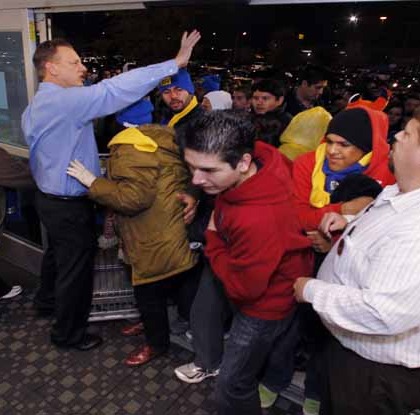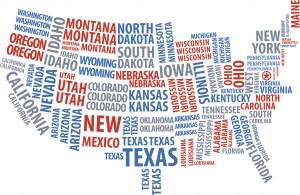25
2014
DO NOT RINSE YOUR TURKEY!
Thanksgiving is a time to celebrate family and friends, enjoy the fall harvest, and to stuff our faces full of delicious food. No matter your specific traditions, I’m certain the stuffing-of-faces is common acros…s all Thanksgiving tables. I must confess, I’ve never prepared a full Thanksgiving meal although I have contributed dishes. When I cook any time of year, not just for Thanksgiving, I…
24
2014
Winter weather safety hazards: OSHA’s tips
Winter weather is approaching faster than you think — especially if recent snowfalls around the country are any indication. Are your workers prepared to deal with winter hazards? OSHA has provided information for workers who will need to navigate through specific safety concerns this winter. Issues like winter driving and traffic safety, safe snow removal and working on power lines or fallen trees are…
20
2014Food Safety Tips for Areas Affected by Severe Weather
The U.S. Department of Agriculture’s (USDA) Food Safety and Inspection Service (FSIS) issued food safety recommendations for the Great Lakes due to the forecast for severe winter conditions, although the recommendations need not be limited to the Great Lakes and are applicable to the all of the United States. FSIS recommends that consumers take the following steps to reduce food waste and the risk of…
17
2014OSHA’s new injury reporting requirements: What you need to know
Federal OSHA’s new stricter severe injury and fatality reporting requirements take effect on Jan. 1, 2015. Is your safety team ready? OSHA’s new rule – Occupational Injury a…nd Illness Recording and Reporting Requirements – NAICS Update and Reporting Revisions — focuses on severe injuries and fatalities. What must be reported As of Jan. 15, 2015, companies are required to report the following injuries to OSHA:…
14
2014
OSHA issues warning about holiday shopping crowds
OSHA is getting into the holiday spirit with what’s become something of a tradition for the safety agency: issuing an annual reminder about the dangers of large shopping crowds. The agency released a Fact Sheet on crowd management for retail stores and is sending it to employers who will face the shopping season’s first swarms of shoppers on “Black Friday” — the day after…
13
2014
Could OSHA actually get more funding from new Congress?
Now that the dust has settled after the midterm elections, what do the results mean for OSHA? History tells us that things might not be quite what you’d expect. According to former OSHA staffer John Newquist, the last time the U.S. saw a Republican Congress with a Democratic President (1999 — 2000) OSHA’s budget went up from $370 million in 1998 to $455 million in 2001…
12
2014
Use Near Misses to Get Management Thinking About Safety
A “near miss” is a close call. It’s an incident that could have ended badly, an accident that could have caused serious injury or death but didn’t. Most of the time, in the wake of a near miss, workers are shaky but relieved, laughing nervously and mopping their brows over what might have happened and how narrow their escape was. But near misses are actually…
11
2014
Company owner arrested for ignoring OSHA violations
OSHA is serious about forcing employers to pay for the safety violations they receive. Case in point: One individual was recently taken into custody after his company failed to correct violations and pay the fines after multiple OSHA inspections and citations. Illinois business owner Mike Neri was taken into custody by a U.S. Marshal because he didn’t correct some serious trenching hazards and pay the OSHA fines. Neri,…
05
2014Ebola Virus Control and Prevention
Currently, most workers in the U.S. are unlikely to encounter Ebola virus or individuals with Ebola Hemorrhagic Fever (EHF). However, exposure to the virus or someone with EHF may be more likely in certain sectors, including the healthcare, mortuary/death care, and airline servicing industries. Workers who interact with people, animals, goods, and equipment arriving in the U.S. from foreign countries with current EHF outbreaks are…
04
2014Workers dragging their feet on new safety rules: What would you do?
Here’s a challenging scenario you might face in the workplace: A safety manager learned about some great new safety procedures that he thinks would help his workers. But he knows the workers are set in their ways. The safety manager needs to get them to comply. What would you do in this situation?
